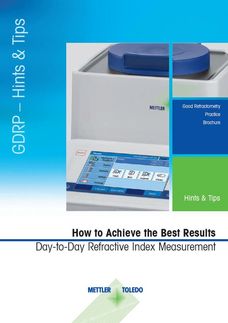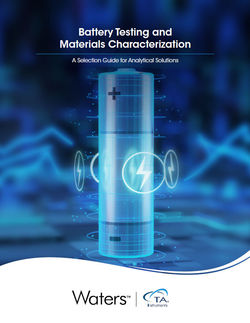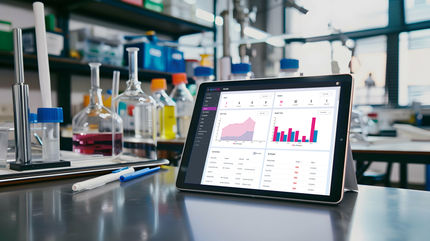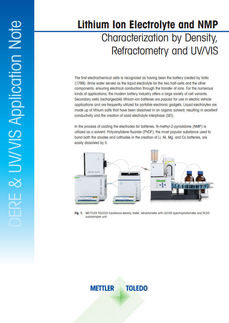
Mettler-Toledo
Loading...
Refractive Index Measurement Guide

How to Improve Refractive Index Measurement with Digital Refractometers?
This refractive index measurement guide explains what precautions should be taken to avoid errors when measuring the refractive index, BRIX, HFCS or concentration of liquids. Following these recommendations will allow you to achieve the best results in refractive index measurement, especially with digital refractometers.
Following topics are covered:
- Test and Adjustments: What is best, regular tests or regular adjustments? How often should the refractometer be tested or adjusted, with which substance? Which tolerance should be applied?
- Samples: Which types of sample can be measured with a digital refractometer? Which are the difficult samples and how to measure them? What can be the effect on the measurement?
- Sampling: Which types of syringe should be used? How to avoid air cushions? How much sample should be applied?
- Cleaning: How should the cell be cleaned, depending on the sample? Which solvents should be used?
- Result verification and documentation: How to detect errors for critical/problematic samples? How to convert the result in other units or concentrations? How to automatically verify if the result is within product specification (Quality Control)?
Advertisement










